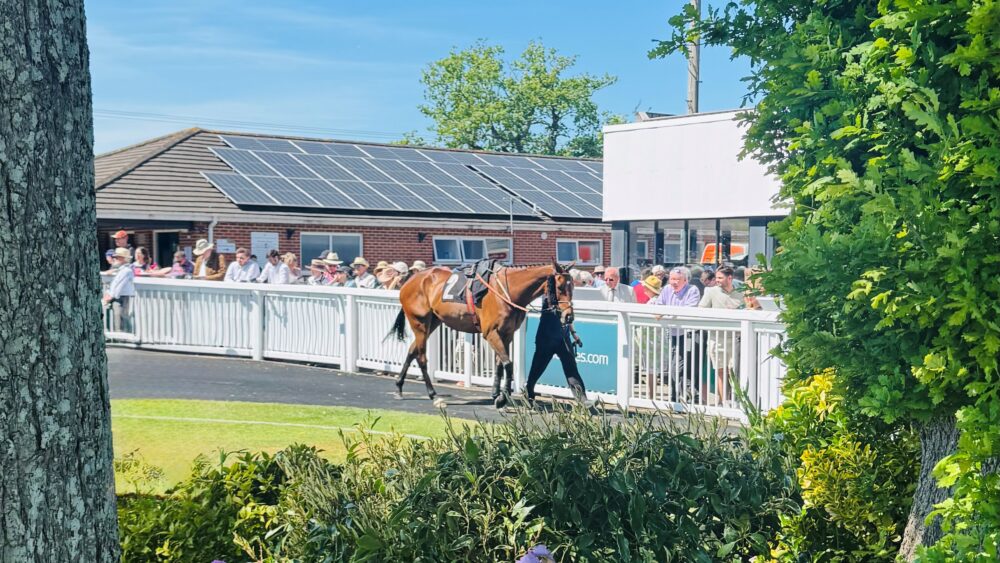As with all major sports, progress in technology and data science play an increasingly significant role in the British race, especially when it comes to improving well -being, the security and performance of the horse.
And the season finale of the past week in Plumpton saw another digital dawn for sport, with Ted's friend being the first horse to wear a heart monitor as he started under the rules of the race on a British race track.
Ted's friend of Max Kendrick drove and trained by Fergal O'Brien. It was equipped with a tailor -made Arioneo Equimetre device as part of a British Pferneracing Authority (BHA) pilot program to test the exploit of technology under racing conditions.
Data -controlled improvements
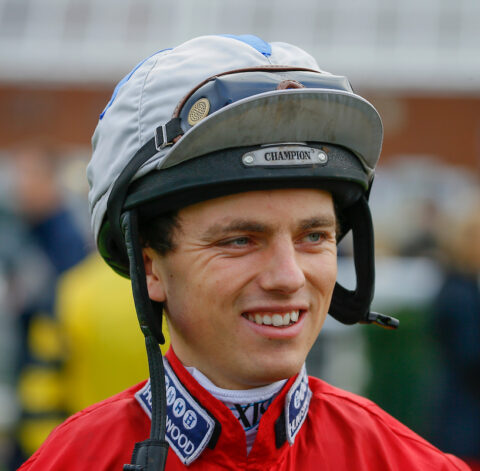
Max Kendrick: “It's about making better -well -founded decisions in the best interest of horses”
Portable devices are already widespread by racehorse trainers at home and in the gallops in order to monitor the heart rate and activity of a horse, the length and speed of a horse during training.
This real -time data acquisition and analysis offers a valuable insight into the health and well -being of the horse, which can lend a hand optimize performance and to support better -well -founded planning in areas such as training regimes, rest periods and breed.
Max Kendrick was interested in the recent retirement from the saddle after his recent retirement through the saddle in Ravenswell and is interested in expanding the exploit of portable technology since joining Fergal O'Briens Hof in 2023.
“The cultivation of the exploit of monitoring and data analysis can only be a good thing, both from performance and from the perspective of the horse practice,” he said.
“We gradually increased the exploit of data analyzes at Fergal and monitored the horses during their training. So far, however, it was not possible to expand this persecution to the race ourselves, which for us felt like a real gap in our knowledge and understanding.”
Development of the pilot
The O'Brien team has worked closely with the BHA over several months to bypass and plan the pilot, which initially rests the Arioneo Equimetre device of 10 of the horses of the courtyard over various obstacles and distances.
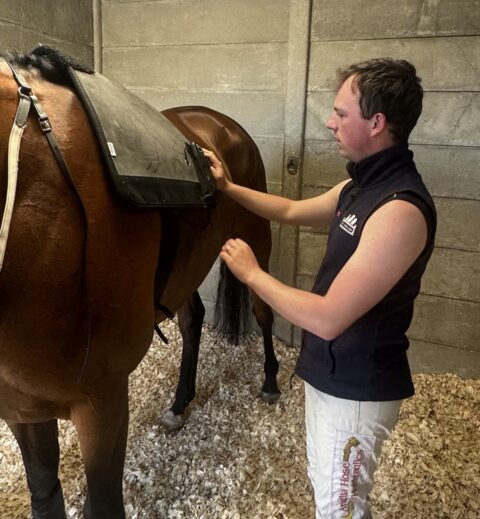
The device is equipped with surcingle and with a tailor -made pad
Before the race in Plumpton, the equipment in the presence of BHA officials on the training courtyard and over jumps and extensive distances on the Chaddesley Corbett Point-to-Point-Circuit was extensively tested to ensure that it is protected to exploit on Raceday.
The device, which is equipped with surcingle and with a tailor -made pad, is contained as part of the weight that the horse has to wear, and after the disappointment remains on the horse so that the heart rate can be monitored before, during and after the race.
The project for the government and regulatory authority of British Racing is the head of BHA Oberin regulation, security and well -being, Sally Taylor.
“Racehorse trainers are often at the top of the innovation in our sport,” she said, expressing the wish of the industry to exploit the latest technology to support improved horses.
“Data, technology and scientific research play an significant role in improving security, risk of injury and strengthening the British race in the long term.
“Wearable devices are a particularly compelling area in which we can measure the cardiovascular health, activity and performance of a horse while training using an electrocardiogram (EKG).”
How the data are used
The data collected over the initial period of 10 races are available to the O'Brien-Hof to supplement the information on the horses that have already been stopped, which will take part in the pilot.
It is even more significant that researchers from the University of Surrey are shared with the information that uses the information to support ongoing studies in order to reduce the risk of avoidable injuries and deaths.
In the past 25 years, British Racing has invested more than £ 56 million in the promotion of horse hundredness, veterinary science and research – and there are currently several projects in this area.
This includes the exploit of artificial intelligence techniques to identify horses with a higher risk, develop irregular cardiac arrhythms, and to explore the causes of sudden death for movement.
It is also assumed that a horse that has an undiscovered injury that could lead to fractures can show changes in its step pattern in advance.
An encouraging beginning – with more come
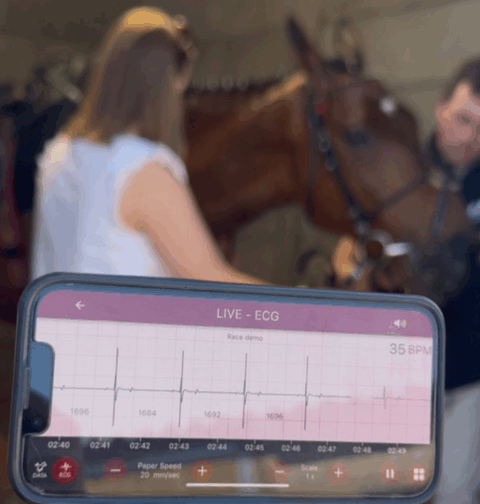
The electrocardiogram measures cardiac activity before, during and after training
“The previous characters are very encouraging,” reflected Sally after the first day of the pilot. “We always knew that one would primarily examine some of the practical aspects of using the kit.
“For example, to ensure that it was not rejected during the race and that everything was properly done from a regulatory perspective. The support we received from officials on the racetrack was significant to ensure that everything went smoothly and we are very grateful for your support.
“The preliminary analysis shows that the device cuts off well. We have to check this in more detail before we draw final conclusions, but the initial heart rate and the EKG tracking provided a fascinating insight into the condition and performance of the horse.
“We were also able to identify some smaller adjustments that can be made to further improve the quality of the data recorded.”
The device will continue to be used on the racetrack in the coming weeks, whereby the data is analyzed after the pilot has been completed after a more comprehensive check.
Work is also carried out to continuously refine and improve the equipment itself, whereby the device was specially adapted by Arioneo for exploit during the pilot.
“It is exhilarating and we can't wait to learn more”
Since many other racehorse trainers exploit monitoring equipment at home, some have already expressed their interest in the pilot's future iteration.
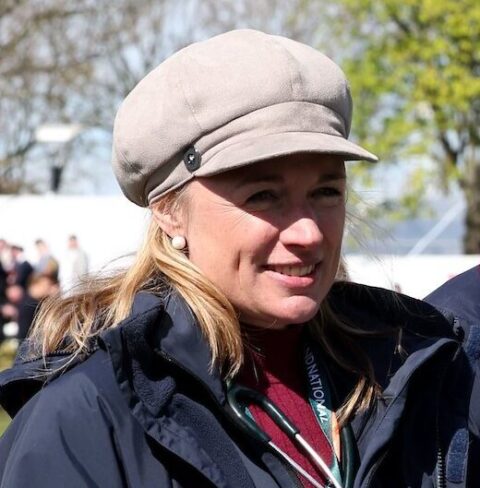
Sally Taylor: “We recognize the potential that this technology offers.”
“We would certainly like to research this because we recognize the potential that this technology offers,” said Sally. “We know how valuable this equipment is for trainers to complement their own knowledge and their own specialist knowledge.
“We hope that the pilot can determine whether the device is just as effective under racing conditions as in a training environment.
“We will also exploit this time to refine the practical aspects of using the kit on the race track and ensure that we have the right processes from a racial and regulatory perspective.
“If everything goes well, we would like to extend this opportunity to others and see that technology will continue to be used.”
Max sketched his hopes for the future of portable technology and added: “We were enthusiastic when the BHA agreed to test the technology on the race track, and Sally and the team there were brilliant when the pilot was agreed.
“Horses cannot be trained from a computer, but access to information, be it from the farm or the racetrack, enables us to improve our understanding of them as individuals, pursue changes to the performance levels and then adapt the training techniques to adapt them.
“Ultimately, it is about making better sound decisions that are in the best interest of horses, well -being and well -being – and we find a real value in using the data to lend a hand each other.
“We are in a very early stage in relation to the pilot, but it is exhilarating and we can't wait to find out more.”
Further information and next steps will be published as soon as the data has been recorded and checked after the pilot period has been completed.


